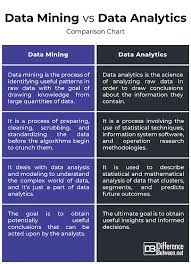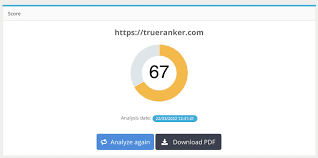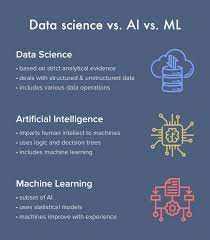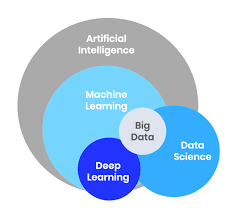The Power of Data Mining and Data Analysis
Data mining and data analysis are two crucial processes that play a significant role in extracting valuable insights from large datasets. In today’s digital age, where data is generated at an unprecedented rate, the ability to harness this data for informed decision-making has become more important than ever.
What is Data Mining?
Data mining is the process of discovering patterns, trends, and relationships in large datasets using various techniques such as machine learning, statistical analysis, and artificial intelligence. By applying advanced algorithms to vast amounts of data, organisations can uncover hidden information that can drive strategic decisions and improve business outcomes.
The Importance of Data Analysis
Data analysis involves inspecting, cleaning, transforming, and modelling data to extract meaningful insights that can be used to make informed decisions. It helps businesses understand their operations better, identify opportunities for growth, and mitigate risks effectively. Through data analysis, organisations can optimise processes, enhance customer experiences, and gain a competitive edge in the market.
Benefits of Data Mining and Data Analysis
- Improved Decision-Making: By uncovering patterns and trends in data, organisations can make more informed decisions that are backed by evidence rather than intuition.
- Enhanced Efficiency: Data mining and analysis help streamline processes, identify bottlenecks, and improve overall operational efficiency.
- Better Customer Understanding: By analysing customer data, businesses can gain insights into customer behaviour and preferences to tailor their products or services accordingly.
- Risk Mitigation: Identifying potential risks through data analysis allows organisations to proactively address issues before they escalate.
- Competitive Advantage: Leveraging data mining and analysis enables companies to stay ahead of competitors by identifying emerging trends and opportunities in the market.
The Future of Data-Driven Decision-Making
As technology continues to advance rapidly, the importance of data mining and data analysis will only grow. Organisations that embrace these practices will have a competitive edge in today’s fast-paced business environment. By leveraging the power of data-driven insights, businesses can unlock new possibilities for growth and innovation.
7 Essential Tips for Effective Data Mining and Analysis
- Understand the business problem you are trying to solve before starting data mining.
- Ensure your data is clean and well-organised before beginning analysis.
- Use a variety of data mining techniques to explore different aspects of the data.
- Visualise your data through graphs and charts to identify patterns and trends.
- Regularly validate your models to ensure they are accurate and reliable.
- Consider the ethical implications of your data analysis, especially when dealing with sensitive information.
- Document your process and findings for future reference and reproducibility.
Understand the business problem you are trying to solve before starting data mining.
Before embarking on the journey of data mining and data analysis, it is crucial to first understand the business problem at hand. By clearly defining the objectives and challenges that need to be addressed, organisations can tailor their data mining efforts towards extracting relevant insights that directly contribute to solving the specific business issue. This strategic approach ensures that the data analysis process is focused, efficient, and ultimately leads to actionable outcomes that drive meaningful impact within the organisation.
Ensure your data is clean and well-organised before beginning analysis.
Before embarking on data mining and data analysis, it is essential to ensure that your data is clean and well-organised. Clean and well-organised data sets the foundation for accurate and reliable insights. By meticulously preparing your data, removing inconsistencies, duplicates, and errors, you can avoid misleading results and make the analysis process more efficient. Organising your data in a structured manner not only facilitates smoother analysis but also enhances the overall quality of the conclusions drawn from the data mining process.
Use a variety of data mining techniques to explore different aspects of the data.
When engaging in data mining and data analysis, it is essential to utilise a diverse range of data mining techniques to explore various facets of the dataset. By employing different methods, such as clustering, classification, regression, and association, analysts can uncover hidden patterns and relationships that may not be apparent with a single approach. This comprehensive exploration enables a more thorough understanding of the data, leading to more accurate insights and informed decision-making.
Visualise your data through graphs and charts to identify patterns and trends.
Visualising your data through graphs and charts is a powerful tip in the realm of data mining and data analysis. By presenting complex datasets in a visual format, patterns and trends that may not be apparent from raw numbers can be easily identified. Graphs and charts provide a clear and concise way to communicate insights, making it simpler for decision-makers to understand the significance of the data at hand. This visual representation not only enhances the interpretation of data but also facilitates more informed decision-making processes based on the identified patterns and trends.
Regularly validate your models to ensure they are accurate and reliable.
Regularly validating your models is essential in the realm of data mining and data analysis to uphold accuracy and reliability. By consistently assessing the performance of your models against new data sets, you can verify their effectiveness in predicting outcomes and identifying patterns. This validation process not only helps in maintaining the quality of your analyses but also enables you to make informed decisions based on up-to-date information, ultimately enhancing the value of your data-driven insights.
Consider the ethical implications of your data analysis, especially when dealing with sensitive information.
When engaging in data mining and data analysis, it is essential to conscientiously consider the ethical implications of the process, particularly when handling sensitive information. Safeguarding data privacy and ensuring responsible use of data are paramount in maintaining trust with individuals whose information is being analysed. By prioritising ethical considerations, organisations can uphold integrity, respect confidentiality, and mitigate potential risks associated with the misuse of sensitive data. Transparency and accountability in data analysis practices are key to fostering a culture of ethical responsibility in the ever-evolving landscape of data-driven decision-making.
Document your process and findings for future reference and reproducibility.
It is essential to document your process and findings when engaging in data mining and data analysis. By recording the steps taken, methodologies used, and results obtained, you not only create a valuable resource for future reference but also ensure reproducibility of your work. Documenting the process allows others to understand and replicate your analysis, verify the accuracy of your findings, and build upon your work for further insights. This practice promotes transparency, accountability, and efficiency in data-driven decision-making processes.





